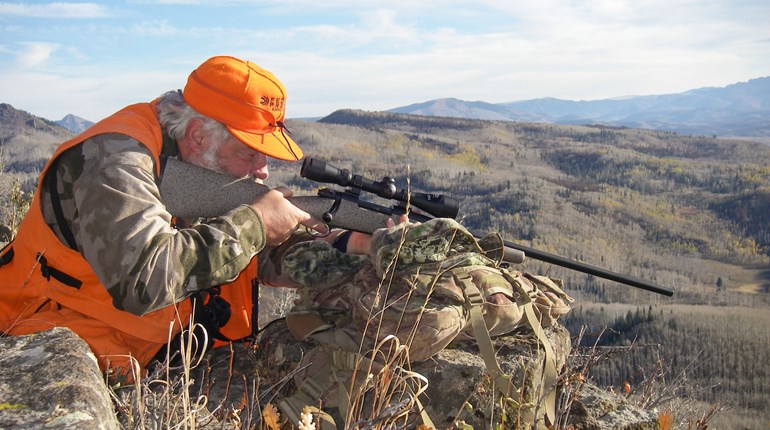
In 1953 the bean counters told William B. Ruger that single-action revolvers were dead and would never sell. So he brought out the Single Six .22-caliber single-action revolver. Sturm, Ruger and Co. is still selling all it can make.
Ruger wanted to make a rifle and everybody told him he was foolish to consider a single-shot. "They want repeaters," said the cynics. But Bill Ruger didn't listen. In 1966 Sturm, Ruger introduced the single-shot Number One. It was a hit and is still selling great today, nearly 40 years later.
Then Ruger wanted a good bolt-action rifle that a working man could buy with one week's pay. He accomplished it with the M77. The Model 77 rifle was made from 1969-1989, then replaced by the M77 MK II.
The MK II achieved another level recently with this year's introduction of the M77 Hawkeye. It's available in several configurations, including the Hawkeye Standard, All-Weather, African and Alaskan models. The Hawkeye Alaskan is chambered in .358 Winchester and the new .375 Ruger. My test gun in .358 Win. shoots sub-MOA groups with factory loads.
But on the "cool factor" scale, the .375 Ruger M77 Hawkeye Alaskan is clearly the top dog. It was developed in conjunction with the new .375 Ruger cartridge loaded by Hornady. In the Alaskan's 20-inch, hammer-forged barrel, the .375 Ruger's ballistics match the revered .375 H&H, even when the H&H is fired from a 24-inch barrel. Brown bear or moose, this gun is a bad boy.
The M77 Hawkeye Alaskan is a stainless steel rifle available in two finishes: matte or Alaskan black. The Alaskan black is an applied coating that adds another layer of protection to the rifle. It's done with cutting-edge technology: The gun is put in a vacuum and electrically charged. The finish material is introduced as microscopic particles that are oppositely charged. Opposites attract and the coating mates with the metal. This is a closely controlled process-both in time and rate of deposition-that results in a thin, even coating that bonds extremely well to the metal.
The barreled action is then matched with a Hogue OverMolded synthetic stock. The "OverMolded" outer skin of this stock is rubber, which provides a positive gripping surface in any weather. The fore-end and pistol grip feature a pimpled, textured surface to further enhance gripping. The bottom of the pistol grip features an inletted, pewter-colored emblem with the Ruger eagle.
The action is pillar bedded. The rear pillar is a conventional aluminum column, but the front is something different: The Hawkeye features the angled front action screw found on all Ruger bolt-actions. This screw fits into the recoil lug, so conventional pillar bedding will not work. Instead, Ruger installed a larger-diameter column on an angle and then machined the top to match the profile of the recoil lug. It's simplistic genius, really.
The Ruger M77 Hawkeye Alaskan comes with the new LC6 trigger. It's no secret that Ruger rifles have long had a problem with their triggers (they were often too heavy), but no more. The factory trigger on my gun breaks at 4.5 pounds-still a bit stiff, but a vast improvement over the older Ruger triggers. This new trigger is crisp, clean and about damn time.
The Hawkeye's dual-lug bolt features a non-rotating claw extractor with a fixed ejector. This controlled-round-feed system was developed by Peter Paul Mauser in the late 1800s and is still the unquestioned standard of reliability and dependability for any rifle, particularly a dangerous-game gun. The big claw extractor will pull out any stuck case, and the harder you work the bolt, the further the ejector throws the empty.
The trigger-blocking safety is a three-position design. The rotating "wing" locks the trigger and bolt when in the rear position. The center position unlocks the bolt, but continues to block the trigger for safe loading and unloading. Full forward is fire. The floorplate is steel and is tough enough to withstand a landmine. It also has the Ruger logo engraved on it. Like all Ruger rifles, the receiver is machined for integral scope mounting and the rings are shipped with the rifle. As anyone who has ever been tasked with purchasing scope rings and bases knows, this is a real bonus.
The M77 Hawkeye Alaskan is shipped with a rather unique set of iron sights. The front sight is a barrel band with a ramp. It's topped with a sight blade featuring a large faux-ivory bead. The rugged, shallow V-notch rear sight is non-adjustable for elevation, but is adjustable for windage. A Ruger spokesperson told me the sights are regulated for the Hornady ammo, but that they have sight blades in other heights available if the factory standard blade does not zero with the load you use. The rear sight has a vertical, inletted white line to lead your eye to the bottom of the V.
The Hawkeye Alaskan is designed to be used in the harshest weather on Earth. As anybody who has spent much time in coastal Alaska in the fall knows, the name was well chosen. Ruger's latest rifle is up to the task.



































